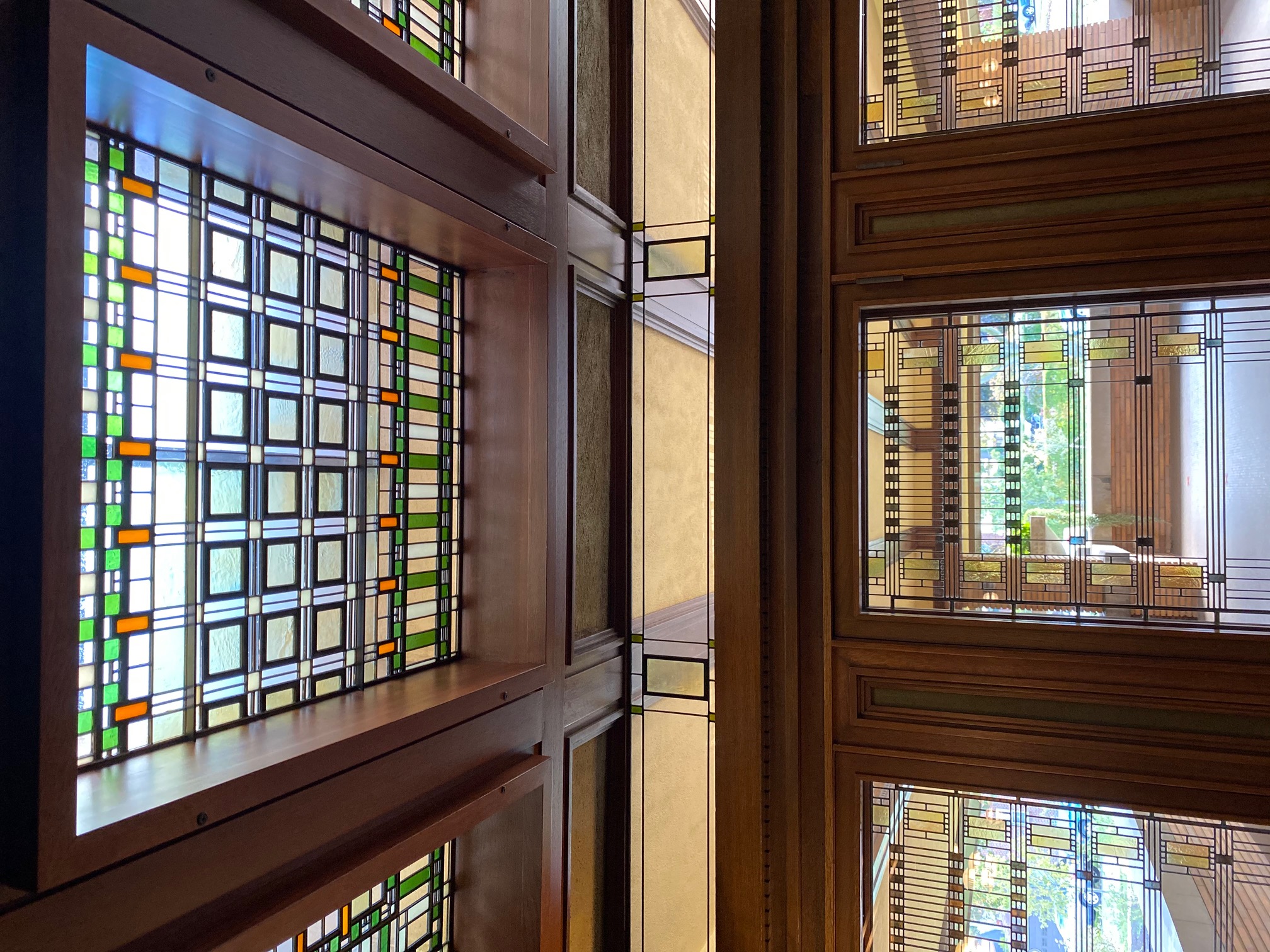This article, written by Danielle Ossher, was originally published in The Buffalo News on September 19, 2021.
Museumgoers around the world can peek at the inspired design and top-notch artistry that Buffalonians need only travel mere minutes to immerse ourselves in.
Pieces from Frank Lloyd Wright’s Martin House – a premier work of the renowned architect, and of the American Prairie style he pioneered – are in the collections of more than 20 museums across four countries, including Musée d’Orsay in Paris, the National Gallery of Australia and the Museum of Modern Art in New York City.
Unequivocally one of the most important American architects of the past century, Frank Lloyd Wright (1867-1959) brought an entirely distinct vision to his craft that redefined the connection between a building and its environment. His works were innovative and all encompassing, from structure itself to every last detail within it.
The one-of-a-kind art glass Wright designed for the Martin House – which was built between 1903 and 1905 – is prominently featured in museums for a worldwide audience to appreciate.
At least 12 museums currently house Tree of Life windows, including the National Gallery of Australia Art, Art Institute of Chicago and Los Angeles County Museum of Art. One of 16 primary patterns designed specifically for the many doors, windows and skylights throughout the Martin House estate, Tree of Life is considered the best-known art glass motif of his illustrious career.
The furniture in every space was all Wright’s own creations as well, essential in realizing his holistic vision. One of his signature pieces, the barrel armchair first designed for the Martin House – and then iterated on in many projects to follow – is part of the American chair design collection at Figge Art Museum in Davenport, Iowa.
The Martin House is not simply one building, but rather a collection of interconnected buildings and residences set on 1.5 acres in Buffalo’s Parkside neighborhood. An open-air, covered pergola connects the Darwin D. Martin House to its conservatory, a glass-enclosed garden tailored to house rare and tropical plants. Musee d’Orsay in Paris and The Hunterian in Glasgow, Scotland, both showcase elements from the conservatory – an art glass door and window, respectively.
The Barton House, the first structure built (as a test for the architect) for Darwin Martin’s sister and brother-in-law, features many of the same thoughtful touches as its grander next-door neighbor. The oak dining set Wright custom fashioned for it – a table and eight chairs – are on display at the Minneapolis Institute of Arts.
The culmination of a 25-year restoration effort last year means there’s now no museum visit that can rival the experience of seeing these works as they were first imagined – within the home itself. One of Wright’s earliest works that was nearly lost to time, the Martin House provides an unparalleled immersion into his ahead-of-the-times vision and casts his creations in the most powerful of settings.
Returning home
When the considerable restoration effort of the Martin House was underway, original pieces started to find their way back home.
First was a set of birdhouses, returned from the Albright-Knox Art Gallery in 2006. Then the Grey Art Gallery at New York University gave back its Tree of Life window in 2010.
A flurry of reunions then proceeded.
Albright-Knox donated the rest of its Martin House collection in 2011, comprised of key pieces: an iconic barrel chair, table, side chair and a Tree of Life window. And the University of Victoria, British Columbia, sent seven pieces back to Buffalo – including a pair of cabinet doors and a Wisteria window.
“They were wonderful stewards who knew that for the public to understand and truly appreciate these pieces in the fullest sense, they should come back home to the Martin House” says curator Susana Tejada.
“I think of the art glass as not only this beautiful work of art, but also one that brings the beauty of the house all together – understood not only as one individual piece of glass but in its entirety.”
Inspired by just that sentiment, the dedicated volunteers of the Martin House started a grassroots effort to fund the creation of replica art glass so still-missing elements of Wright’s original vision can be restored. It’s a simple collection jar that’s already funded four new pieces.









